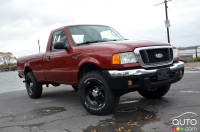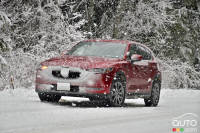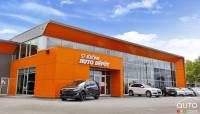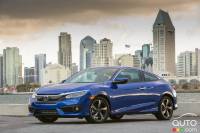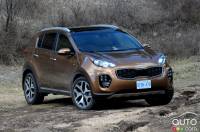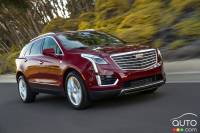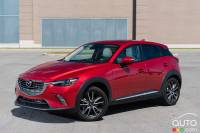In an effort to think outside the box about fuel economy and emissions by creating a bionic car, DaimlerChrysler has looked to the boxfish, or Ostracion Cubicus.
Bionics is the science of combining biology and technology, since Nature has had a lot more experience developing and evolving creatures to deal with certain situations.
Using a multi-disciplinary team, DCX set out to search nature for a specific example in nature whose "shape and structure approximated to their ideas for an aerodynamic, safe, spacious and environmentally compatible car."
The biologists, bionics scientists and automotive researchers "embarked on an extraordinary expedition into the animal kingdom which soon led them into the depths of the underwater world -- and presented them with a surprise.''
Turns out it wasn't the "fast, sleek swimmers such as the shark or dolphin that came closest to the ideals of the research engineers, but a creature that looks anything but streamlined and agile at first sight: the boxfish."
It turns out the boxfish's home is also very much like many places on dry land, since the coral reefs, lagoons and seaweed force it to "conserve its strength and move with the least possible consumption of energy, which requires powerful muscles and a streamlined shape. It must withstand high pressures and protect its body during collisions, which requires a rigid outer skin. And it needs to move in confined spaces in its search for food, which requires good manoeuvrability."
For DCX, the principal lesson of the boxfish is that nothing is superfluous and each part of the body has a purpose, and sometimes several at once.
Applied to automotive engineering, DCX says, "the boxfish is therefore an ideal example of rigidity and aerodynamics. Moreover, its rectangular anatomy is practically identical to the cross-section of a car body."
The first sub-project tackled by DCX engineers concerned aerodynamics, so in wind tunnels and water channels they examined how the attributes of the living model could be transferred to a vehicle.
It was impossible for DCX to achieve the same aerodynamic (CD, for co-efficient of drag) rating of the boxfish (0.04), but the first scale model (at 1:4) managed to achieve a CD of 0.095, which is remarkable.
In bringing the boxfish shape up to real-world size, the DCX engineers were unable to replicate that kind of figure, but the 0.19 CD they did achieve is still really good. Indeed, it is among the most aerodynamic in its size segment, which is 4,243 mm long, 1,815 mm wide, and 1,594 mm high on a 2,568-mm wheelbase.
As a result of this, the Bionic car with its inline-four diesel engine good for 140 hp and 223 lb-ft of torque consumes only 4.3 litres of fuel per 100 km on the European fuel test cycle, or about 110 km per US gallon. In general, DCX says, the Bionic Car is about 20 percent more fuel efficient than comparable production cars.
At a constant speed of 90 kmh, the EU fuel consumption falls to 2.8 l/100km, which corresponds to about 125 km per US gallon in the US test cycle.
Bionics is the science of combining biology and technology, since Nature has had a lot more experience developing and evolving creatures to deal with certain situations.
Using a multi-disciplinary team, DCX set out to search nature for a specific example in nature whose "shape and structure approximated to their ideas for an aerodynamic, safe, spacious and environmentally compatible car."
The biologists, bionics scientists and automotive researchers "embarked on an extraordinary expedition into the animal kingdom which soon led them into the depths of the underwater world -- and presented them with a surprise.''
 |
It turns out the boxfish's home is also very much like many places on dry land, since the coral reefs, lagoons and seaweed force it to "conserve its strength and move with the least possible consumption of energy, which requires powerful muscles and a streamlined shape. It must withstand high pressures and protect its body during collisions, which requires a rigid outer skin. And it needs to move in confined spaces in its search for food, which requires good manoeuvrability."
 |
Applied to automotive engineering, DCX says, "the boxfish is therefore an ideal example of rigidity and aerodynamics. Moreover, its rectangular anatomy is practically identical to the cross-section of a car body."
The first sub-project tackled by DCX engineers concerned aerodynamics, so in wind tunnels and water channels they examined how the attributes of the living model could be transferred to a vehicle.
 |
In bringing the boxfish shape up to real-world size, the DCX engineers were unable to replicate that kind of figure, but the 0.19 CD they did achieve is still really good. Indeed, it is among the most aerodynamic in its size segment, which is 4,243 mm long, 1,815 mm wide, and 1,594 mm high on a 2,568-mm wheelbase.
 |
At a constant speed of 90 kmh, the EU fuel consumption falls to 2.8 l/100km, which corresponds to about 125 km per US gallon in the US test cycle.






